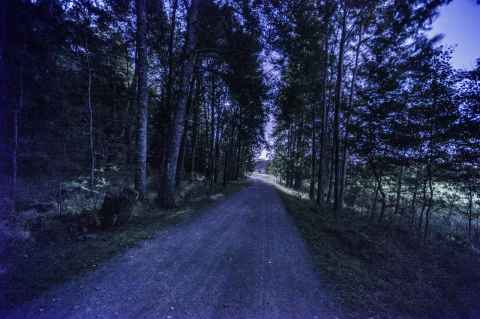Nikon D3200 Long Exposure Noise
I often photograph starry skies, and while doing very long exposures - over the 30 second limit of the Nikon D3200 - I noticed that there would be a reddish noise along the edges of the image. This is an attempt at understanding that noise.
1. Problem
The questions are:
Where does the noise come from? Is it limited to the edges, or is there an increase in noise across the sensor at long exposures?
Does the noise increase with increased exposure time? That is, would a photo at ISO 800 have less noise than one at ISO 400 but with twice the exposure time?
Is the noise increase linear? This is related to the previous question, but asks if a lower noise level could be obtained by splitting a longer exposure into several shorter ones that are then averaged together. If the noise comes from heat buildup, then keeping the exposures short and allowing the sensor to cool down between shorter exposures would reduce the total amount of noise.
2. Setup
I made the following exposures:
20 s at ISO 800
40 s at ISO 400
80 s at ISO 200
160 s at ISO 100
8 exposures of 20 s at ISO 800
The first four exposures would answer questions one and two: If the region affected by the noise increased as the exposure time went up, then the problem was not limited to the edges; whereas if it stayed constant, then the noise would be limited to the edges. Comparing the noise levels at ISO 800 and ISO 100 would answer the second question.
Averaging the last eight exposures and comparing the result with the 160 s exposure at ISO 100 would answer the third question.
3. Results
The noise is limited to the edges.
It does not increase with increased exposure time.
The increase is linear.
Also I found that taking multiple shots at a higher ISO but with shorter exposure times simply caused a lot of the image data to drop below the noise floor of the sensor, resulting in a total loss of chroma information.
Here are the resulting images, with full, center and bottom left corner. The bottom left corner image has been brightened three stops (8x) to make comparisons easier. The tabs correspond to the ISOs the photos were shot at.
800400200100Avg
800400200100Avg
800400200100Avg
An interesting result was that the average of the eight exposures at ISO 800 had noise artifacts not present in the ISO 100 exposure.
100Avg
4. Conclusion
The long exposure noise can be modeled as a very weak red light source at the edges of the sensor that is constantly on, irrespective of the exposure time or ISO.
See the next article, Nikon D3200 Dark Frame Noise, for my attempts at getting rid of this noise.
